 1
1

Arkaim and the texts of Rgveda about his builders
 25. 04. 2024
25. 04. 2024



 04. 02. 2020
04. 02. 2020

It's a miraculous product used everywhere, from confectionery to construction. For our dependence on palm oil, however, planet Earth pays for the damage caused by rainforests. Can we replace it with something?
He was probably in the shampoo you used this morning, the soap you washed, the toothpaste you brushed your teeth, the vitamin tablets you swallowed, or the makeup you put on your face. It could also be in the bread that you had toast for breakfast, in the margarine that you put on it, or in the cream that you put in the coffee. If you used butter and milk, the cow they came from was probably also fed with palm oil. It's almost certain that you used palm oil today.
Even the vehicle you were driving today - bus, train or car - ran on fuel containing palm oil. Much of the diesel and gasoline that we use has an added component of biofuel, which comes mainly from palm oil. Even the electricity that powers the device on which you are reading this article now can be partly produced by burning oil palm kernels.
Palm oil is the most popular vegetable oil in the world. It is contained in 50% of consumer products and also plays a central role in many industrial applications. Farmers produced 2018 million tonnes of palm oil on the world market in 77, and production is expected to increase to 2024 million tonnes by 107,6.
The ubiquity of palm oil is partly due to its unique chemical composition. It is obtained from the seeds of West African oil palm, it is bright in color and odorless, which makes it a suitable food ingredient. The oil has a high melting point and a high content of saturated fats, which is ideal for the production of confectionery products and creams that pleasantly dissolve in the mouth. Most other vegetable oils must be partially hydrogenated (hydrogen atoms are chemically added to fat molecules) to achieve similar consistency, a process that leads to unhealthy trans fats.
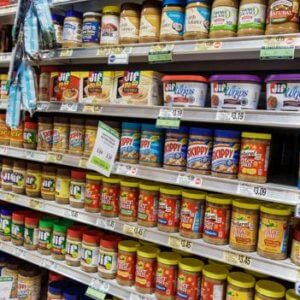
The unique chemical composition of palm oil also allows it to withstand high cooking temperatures and provides high perishability, giving it a long shelf life for the products in which it is found. Oil can also be used as a fuel, as well as palm kernels left over after processing. The husks can be crushed and used to produce concrete, and the ash that remains after the burning of palm fibers and cores can be used as a cement substitute.
Oil palms are also easy to grow in the tropics and are highly profitable for farmers, even in difficult-to-cultivate areas, which have rapidly switched to growing this crop in recent years.
Indonesia and Malaysia alone boast about 13 million hectares of oil palm plantations, almost half of the world's production.
However, the rapid expansion of oil palm plantations is accused of massive deforestation in Indonesia and Malaysia and of destroying the habitat of wild endangered animals such as orangutan and increasing the risk of extinction. These two countries boast about 13 million hectares of oil palm plantations, which is almost half of the world's production. According to Global Forest Watch, Indonesia lost 2001 million hectares of forest between 2018 and 25,6, an area almost as large as New Zealand.
This has led governments and businesses to start looking for alternatives to palm oil. However, replacing a miracle product is not easy. The Iceland chain won the award in 2018 when it announced that it would gradually remove palm oil from all its own brand products (it also came up with a touching Christmas advertisement with a homeless orangutan, which was banned for obvious political focus). Nevertheless, the removal of palm oil from some products proved so difficult that the company preferred to remove its brand from them the following year.
Food giant General Mills - one of the largest buyers of palm oil in the United States - has encountered similar problems. "Although we have already worked deeply on this issue, palm oil provides such unique physical properties that it is very difficult to imitate them," said spokeswoman Mollie Wulff.
The most common approach is to search for other vegetable oils that offer similar properties. In designing palm oil-free soap, the British cosmetic brand LUSH resorted to a mixture of rapeseed and coconut oil. Since then, it has moved further and developed Movis, a custom-made soap base containing sunflower oil, cocoa butter, extra virgin coconut oil and wheat germ.
Meanwhile, food and cosmetics scientists are attempting to produce blends with even more exotic alternatives, such as shea butter, damara, jojoba, mangosteen, ilipé, ragweed or mango kernels. By partially hydrogenating and mixing these "exotic oils", a mixture with similar properties to palm oil can be formed. But none of these ingredients is as cheap or readily available as palm oil. For example, African shea nuts are collected and sold by local communities in small volumes instead of planting, resulting in a limited and unstable supply.
These are not the only recipes whose improvement could lead to do without palm oil. As with soybeans - other crops accused of destroying rainforests - most palm oil is used in animal feed, both farm and pet. In addition to being high in calories, palm oil is rich in essential fatty acids and helps absorb fat-soluble vitamins. As global demand for meat, poultry and dairy products grows, so does the demand for palm oil.
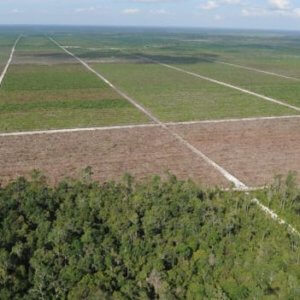
Researchers from the University of Poznań in Poland have investigated whether palm oil in chicken feed can be replaced by a more sustainable source of nutrition: insects. Instead of palm oil, the team fed a diet supplemented with oil from the larvae of the flour and found that it grew just as well, and even showed an improvement in the quality of the meat. These worms also have a high protein content and food waste can be used for their breeding. The British Veterinary Association recently concluded that insect-based feed would be better for farm animals than steak of the highest quality, as well as for the environment.
Despite its ubiquity in pantries and bathrooms, more than half of the palm oil imported into the European Union in 2017 was used for something else - fuel. The EU Renewable Energy Directive has set an ambitious target of 2020% of road transport energy coming from renewable sources by 10. And biodiesel, made from palm oil, has been a major contributor to this goal. However, in 2019, the EU announced that biofuels derived from palm oil and other food crops must be phased out due to the environmental damage associated with their production.
Algae produce oil, very similar to palm oil, to cover their spores and better survive in dry conditions
This decision prompted the EU to seek an alternative. One possibility is algae. Oil from certain types of algae can be converted to bioropa, which can then be distilled into a range of fuels that could replace diesel, jet fuel and even heavy marine oil. This may not be as strange as it seems: most oil fields around the world are fossilized remains of algae.
David Nelson is a plant geneticist who investigates the potential of algae. His genetic research on Chloroidium, a microscopic algae common in Abu Dhabi, suggests that it could be a real alternative to palm oil.
"We have an interesting climate here, not too rainy, it's hot in the summer, so everything that grows has to be able to cope," said Nelson, based at Abu Dhabi University in New York. "One of the ways this alga does it is to produce oil."
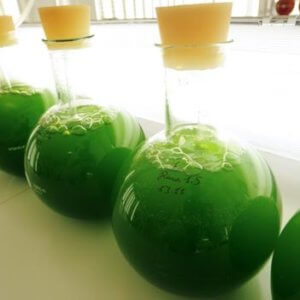
The kelp produces oil very similar to palm oil, which it coats its disputes to help survive in arid conditions. His team hopes to grow algae in vats or open ponds, which would allow this oil to be collected. But Nelson says that big market changes will be needed to do this.
"If politicians say 'No, we won't use palm oil,' then there's a really big and open market for algae-derived 'palm' oil," he says.
Nelson is not the only one hoping for an algae boom. ExxonMobil and Synthetic Genomics announced in 2017 that they had created an algae strain that produces twice the amount of oil than its predecessor. Last year, Honda set up an experimental algae farm at its Ohio plant that captures carbon dioxide from test engine centers. They hope that the system will become modular so that it can be extended to more plants. And San Francisco-based biotechnology company Solazyme has even developed algae fuels for automotive, aircraft and military applications.
However, the main obstacle is to get these products to a stage where they will be able to compete economically and quantitatively with palm oil. In 2013, the University of Ohio created a pilot algae farm, but its chief, mechanical engineer David Bayless, admitted that they had made little progress over the past six years. "The short answer is no, we are no closer." The economy remains a problem and commercial production of algae oil for the commodity market is still very far away, "he says. "I wish I had better news for you."
Under ideal conditions, highly productive palm cultivars can produce more than 25 times as much oil as from soybean cultivation on an equally large area of agricultural land.
Some companies are also investigating whether yeast could be bred to produce the types of oils required by the food and cosmetics industries. However, work on this task is even earlier than farms to produce algae oils. However, in addition to the economic side, there is another problem in replacing palm oil with microorganisms such as algae or yeast. The most controlled and effective way to grow them is through large closed vats, but in this system, sugar needs to be added in large quantities to support their growth. This sugar has to be grown somewhere, so the impact of the final product on the environment simply shifts elsewhere. According to non-profit Bonsucro certifiers, only 4% of the world's sugar is grown under sustainable conditions.
If we are unable to replace palm oil, perhaps we could reduce its environmental impact by changing the way it is produced. To achieve this, we need to take a step back and see what determines his demand.
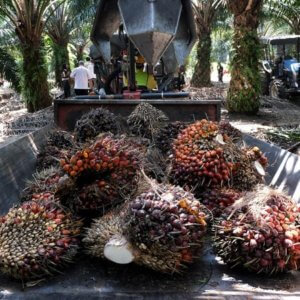
In addition to its unique composition, palm oil is also very cheap. That's because the oil palm is like a miracle - it grows relatively fast, is easy to harvest and is amazingly productive. A hectare of oil palm can reliably produce four tons of vegetable oil each year, compared to 0,67 tons for rapeseed, 0,48 tons for sunflowers and only 0,38 tons for soybeans. Under ideal conditions, high-yielding palm cultivars can produce more than 25 times as much oil as soybeans on the same area of agricultural land. It is therefore ironic that a ban on palm oil would lead to a catastrophic increase in deforestation, because whatever we replace it will require much more land to grow.
However, it is possible to grow oil palm in a way that limits the environmental impact. Most Western companies buy palm oil that is certified by Rountable for Sustainable Palm Oil (RPSO) However, the demand for this certified sustainable palm oil and the willingness to pay a higher price for it is limited. The market for sustainable palm oil is oversold, leading to producers selling certified oil to a wider market without the appropriate labeling. RPSO has been criticized as opaque and ineffective, with the negligible influence of forcing growers to change.
"People at the Malaysian Palm Oil Council are talking about sustainable palm oil, but somehow I don't find that they sell anything sustainable," said Kyle Reynolds, a scientist who until recently worked at Australia's CSIRO research center.
The oil palm grows only up to 20 degrees from the equator - an area where rainforests are growing and which is home to 80% of all species in the world. What if we could reduce the pressure on tropical rainforests by breeding a plant that was as productive as an oil palm but could grow anywhere? That's what Reynolds and his colleagues are working on.
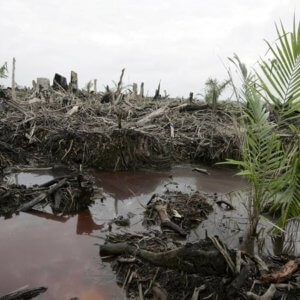
"An oil palm can't grow too far south or north, it's pretty much a tropical crop," says Reynolds. "Something with such a high biomass content should be more adaptable and able to grow in different climatic conditions."
In a laboratory in Canberra, CSIRO scientists have introduced genes for high levels of oil production into deciduous plants such as tobacco and sorghum. Plants can be crushed and oil can be extracted from their leaves. Tobacco leaves typically contain less than 1% vegetable oil, but Reynolds' plants boast up to 35%, which means they provide even more vegetable oil than soybeans.
Scientists have introduced genes for high levels of oil production into deciduous plants such as tobacco and sorghum
There is still some possibility: an attempt at this leaf oil in the USA has failed, probably due to the local climate (in Australia, the transgenic plant cannot be legally grown). And the oil from the tobacco plant is still "far from the palm oil" because its fatty acids are longer and unsaturated. This means that it would need to be processed to achieve similar properties. However, Reynolds claims that it could take about 12 months to breed new and improved tobacco for oil production - if someone is willing to invest in the necessary research.
"It's a huge industry, the current value of oil palms is $ 67 billion," says Reynolds. He reiterates Nelson's concerns. "It should be possible to obtain palm oil from a plant other than an oil palm. We can do it? Sure. But will the price be competitive? "
Obviously, palm oil is not going anywhere. It is almost impossible to avoid it, and it is just as difficult to substitute for something. However, scientific potential can mitigate our impact on the world by developing more sustainable ways to meet our food, fuel and cosmetic needs. All that is needed is the will for this change to take place - and for that will to become ubiquitous as palm oil itself.